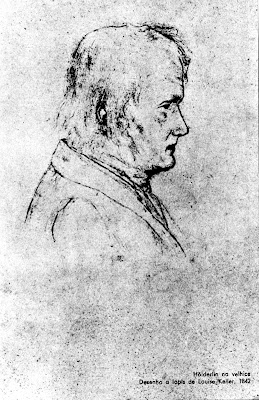Surrealist texts by surrealist women: Lise Deharme

Il était une petite fille
en guenilles
qui n avait qu une idée
du fond de son déséspoir
une idée de mourir
dans la Forêt Noire.
C'est fini pour aujoud hui.
Lise Deharme
 |
| HUGO Valentine - Lise Deharme. Portraits. |
The Little Girl of the Black Forest
Dressed in tatters
Who had only one idea
In the depth of her despair
An idea of dying in the Black Forest
That’s all for tonight
in Penelope Rosemont, op.cit., p.70.
Lise Deharme (1898–1980). Née Lise Anne-Marie Hirtz. The daughter of a famous doctor, she married Pierre Meyer in 1921. Her first book, Images dans le dos du cocher, under the name Lise Hirtz, came out in 1922. She visited the Bureau de recherches surréalistes in 1925 and became known as “The Lady of the Glove” (see Nadja). André Breton undoubtedly found her irresistible and an embodiment of “l’amour fou” that he would extol in the 1930s but she seemed able to keep him at arm’s length. Her second marriage was to the radio pioneer Paul Deharme in 1928 but he died within a few years. Joan Miró illustrated her first book Il était une petite pie (1928). She edited a little review, Le Phare de Neuilly, which helped to promote Surrealism. She herself wrote Surrealist poems, short stories and nursery rhymes. Her Cahier de curieuse personne, a poetic anthology, came out in 1933. Her third husband was Jacques Parsons, whom she married in 1941. In the 1950s she hosted a literary salon; published articles on Gérard de Nerval and Joris-Karl Huysmans in La Tour Saint-Jacques, a magazine that specialized in magic and hermeticism; and wrote one of the four sections of the 1954 volume Farouche à quatre feuilles (together with Breton, Julien Gracq and Jean Tardieu). She brought out over two dozen books, a number of which contained illustrations by famous artists: these include Le Coeur de Pic, with photographs by Claude Cahun (1937), Le Poids d’un oiseau, with illustrations by Leonor Fini (1955) and Oh! Violette ou la Politesse des Végétaux also illustrated by Fini (1969). Paul Éluard wrote the preface to her Cette Année-là (1945). After her death a special issue of Cahiers bleus (no. 19, automne-hiver 1980) was devoted to her. She was more than a mere patroness of the arts: she was one of the leading “Surrealist women”; in 1945 no less a figure than Éluard described her as “the best writer.” Keith Aspley, Historical Dictionary of Surrealism, (Lanham,Toronto, Plymouth,The Scarecrow Press, Inc, 2010),p.154



Comentários